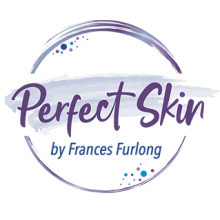
 Acne Scarring
Acne Scarring
Many people who have experienced moderate-to-severe acne are likely to have some kind of acne scarring. For some, the scars are not a problem and do not affect their lives at all. For others, acne scars can cause serious social anxiety, low self-esteem and depression. Acne scars can affect your confidence and can have a negative effect on your life. People who suffer from depression caused by their acne scars report that they socialise less and are less likely to perform well in situations such as job interviews, some people even report experiencing suicidal urges.
. After specialising in acne and scar management 12 years ago, I understand how the condition effects individuals. Patience is needed when treating scarring, however with perseverance it can improve dramatically and enhance a persons quality of life.
Types of Acne Scarring
There are different types of acne scar and different treatments to deal with them. It is likely that you will have more than one kind of scar and require more than one kind of treatment. Seeing a medically qualified practitioner can help you decide which course of treatments is right for you,
Hyperpigmentation – Sometimes, after your acne has cleared, you are left with red, brown, purple, pink or black areas of skin. This is not scarring and is completely normal. When acne is severe it can disturb the pigmentation of the skin in this way. Your skin colour will often return to its normal pigmentation within a year but can sometimes require treatment if the pigmentation does not fade.
Helpful treatments can include medical grade skin care products, skin peeling, intense pulsed light and laser
Ice pick Scars – These scars are probably the most common type of scarring left by acne. They most frequently affect your cheeks and are given their name because they can look as if they have been created by a very small ice pick. They are often deep and quite narrow, with steep sides. The edges of ice pick scars can be quite defined and jagged in appearance.
Helpful treatments can include derma roller, derma pen stamp at medical grade levels not at home kits, dermal filler or a combination of the two.
Boxcar Scars – Boxcar scars are similar to Ice pick scars but are more smoothly rounded, shallower and wider, usually with a visible ‘base’, this might make them seem larger. They are often likened to the kind of scars left by chicken pox and mostly occur on your cheeks and forehead.
Helpful treatments can include hydrating dermal fillers, derma pen stamp, skin peeling and laser
Rolling Scars – This type of scarring is found more often on your body than your face. It is less common but can have a very visible effect on your skin and make its surface appear slightly distorted or ‘wavy’ due to acne damage beneath the surface of the skin. This can cause skin, which looks healthy on the surface, to be depressed and sunken in damaged areas.commonly seen on the back and chest area.
Helpful treatments can include intense pulsed light, laser, derma roller or derma pen , deeper skin peeling
Keloid/Hypertrophic Scars – These scars do not come under the more general category of depressed scars. Instead they are raised. They are created when your body overproduces tissue with which to heal an acne lesion, this results in raised lumps that can be red or pink in colour. These scars rarely affect your face but are more common on your body.
Helpful treatments include laser, derma pen stamp and everyday medical grade skin products
